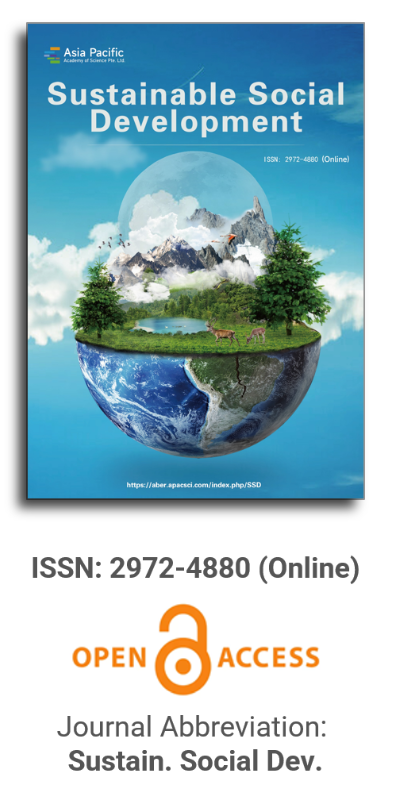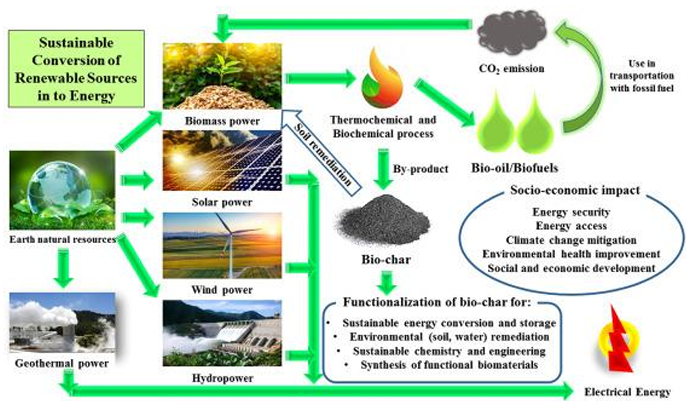
Asia Pacific Academy of Science Pte. Ltd. (APACSCI) specializes in international journal publishing. APACSCI adopts the open access publishing model and provides an important communication bridge for academic groups whose interest fields include engineering, technology, medicine, computer, mathematics, agriculture and forestry, and environment.

Perception of water pollution among Malaysian university students: A case study
Vol 1, Issue 2, 2023
Download PDF
Abstract
The present study aimed to understand the perception and knowledge of university students toward water pollution. In the present study, demographic profile, knowledge of water pollution, university students’ perceptions of water pollution, and attitudes towards water pollution prevention were included in the survey questions. This survey on water pollution was conducted among a diverse group of Malaysian university students using Google Forms. The results showed that almost 50% of the respondents had basic knowledge of water pollution and agreed that industrial activities were the main factor causing water pollution in Malaysia, followed by the accumulation of organic chemical waste and heavy metals. It was also revealed that the water pollution campaign was a key factor in spreading awareness among Malaysians and increasing knowledge about water pollution problems. The results further confirmed that water pollution needs to be aware of, which showed that respondents were well aware of the water pollution issue in Malaysia and felt obligated to spread awareness and take action towards water pollution regardless of their surrounding community.
Keywords
References
- Liu Y, Li H, Cui G, Cao Y. Water quality attribution and simulation of non-point source pollution load flux in the Hulan River basin. Scientific Reports 2020; 10(1): 3012. doi: 10.1038/s41598-020-59980-7
- Huang YF, Ang SY, Lee KM, Lee TS. Quality of water resources in Malaysia. In: Lee TS (editor). Research and Practices in Water Quality. IntechOpen; 2015.
- Naik RK, Naik MM, D’Costa PM, Shaikh F. Microplastics in ballast water as an emerging source and vector for harmful chemicals, antibiotics, metals, bacterial pathogens and HAB species: A potential risk to the marine environment and human health. Marine Pollution Bulletin 2019; 149: 110525. doi:10.1016/j.marpolbul.2019.110525
- Cheung MY, Liang S, Lee J. Toxin-producing cyanobacteria in freshwater: A review of the problems, impact on drinking water safety, and efforts for protecting public health. Journal of Microbiology 2013; 51(1): 1–10. doi: 10.1007/s12275-013-2549-3
- Pang YL, Abdullah AZ. Current status of textile industry wastewater management and research progress in Malaysia: A review. Clean—Soil, Air, Water 2013; 41(8): 751–764. doi: 10.1002/clen.201000318
- Salman A. ICT, the new media (internet) and development: Malaysian experience. The Innovation Journal: The Public Sector Innovation Journal 2010; 15(1): 1–11.
- Aulakh MS, Khurana MPS, Singh D. Water pollution related to agricultural, industrial, and urban activities, and its effects on the food chain: Case studies from Punjab. Journal of New Seeds 2009; 10(2): 112–137. doi: 10.1080/15228860902929620
- Yap CK, Chew W, Cheng WH, et al. Higher bioavailability and contamination by copper in the edible mussels, snails and horseshoe crabs at Kampung Pasir Puteh: Evidence of an industrial effluent receiving site at Pasir Gudang area. Advancements in Bioequivalence & Bioavailability 2019; 2(5). doi: 10.31031/ABB.2019.02.000548
- Goi CL. The river water quality before and during the Movement Control Order (MCO) in Malaysia. Case Studies in Chemical and Environmental Engineering 2020; 2: 100027. doi: 10.1016/j.cscee.2020.100027
- Wang Q, Yang Z. Industrial water pollution, water environment treatment, and health risks in China. Environmental Pollution 2016; 218: 358–365. doi: 10.1016/j.envpol.2016.07.011
- World Health Organization (WHO). Drinking-water. Available online: https://www.who.int/news-room/fact-sheets/detail/drinking-water (accessed on 23 September 2023).
- Verma R, Dwivedi P. Heavy metal water pollution: A case study. Recent Research in Science and Technology 2013; 5(5): 98–99.
- Wang M, Webber M, Finlayson B, Barnett J. Rural industries and water pollution in China. Journal of Environmental Management 2008; 86(4): 648–659. doi: 10.1016/j.jenvman.2006.12.019
- Yap CK, Peng SHT, Leow CS. Contamination in Pasir Gudang area, Peninsular Malaysia: What can we learn from Kim Kim River chemical waste contamination? International Journal of Humanities and Education Development (IJHED) 2019; 1(2): 84–87. doi: 10.22161/jhed.1.2.4
- Wong KW, Yap CK, Nulit R, et al. Effects of anthropogenic activities on the heavy metal levels in the clams and sediments in a tropical river. Environmental Science and Pollution Research 2017; 24(1): 116–134. doi: 10.1007/s11356-016-7951-z
- Ramli NF, Talib O. Can educational institutions implement STEM? From Malaysian teachers’ view. International Journal of Academic Research in Business and Social Sciences 2017; 7(3): 721–732. doi: 10.6007/IJARBSS/v7-i3/2772
- Al-Badaii F, Shuhaimi-Othman M, Gasim MB. Water quality assessment of the Semenyih river, Selangor, Malaysia. Journal of Chemistry. 2013; 2013: 1–10. doi: 10.1155/2013/871056
- Abas MA, Wee ST. The issues of policy implementation on solid waste management in Malaysia. International Journal of Conceptions on Management and Social Sciences 2014; 2(3): 12–17.
- Ruzol C, Banzon-Cabanilla D, Ancog R, Peralta E. Understanding water pollution management: Evidence and insights from incorporating cultural theory in social network analysis. Global Environmental Change 2017; 45: 183–193. doi: 10.1016/j.gloenvcha.2017.06.009
- MSU. MSU Sg Damansara National River Trail Project. Available online: https://www.msu.edu.my/MSUnews/Jan2021-sustainability (accessed on 28 July 2023).
- Janaun. Universiti Malaysia Sabah lecturer invents solar powered river cleaning machine. Available online: https://www.businesstoday.com.my/2022/04/23/university-malaysia-sabah-lecturer-invents-solar-powered-river-cleaning-machine/ (accessed on 28 July 2023).
- Ling S. Internet access for all of Sarawak by 2024. Available online: https://www.thestar.com.my/news/nation/2022/09/21/annuar-internet-access-for-all-of-sarawak-by-2024 (accessed on 28 July 2023).
Supporting Agencies
Copyright (c) 2023 Authors
License URL: https://creativecommons.org/licenses/by/4.0/

This site is licensed under a Creative Commons Attribution 4.0 International License (CC BY 4.0).

Prof. Kittisak Jermsittiparsert
University of City Island, Cyprus





It is with deep regret that we announce the cancellation of the Forum on Sustainable Social Development & Computing and Artificial Intelligence, originally scheduled for June 15, 2025.

